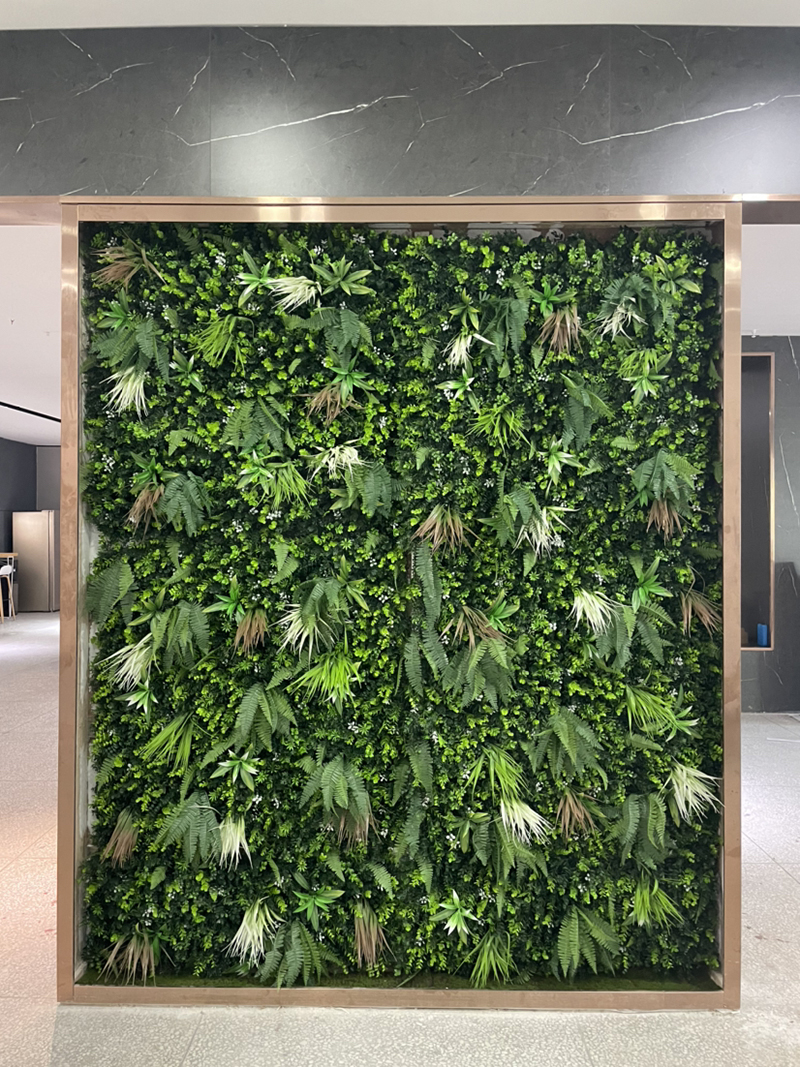Policy Support for 3D Artificial Vertical Gardens: A Comprehensive Overview
The integration of 3D artificial vertical gardens into urban landscapes is gaining momentum as governments recognize their potential to address environmental, social, and economic challenges. Policymakers are introducing a range of measures to incentivize their adoption, from financial support to regulatory flexibility. Understanding these policies is crucial for developers, architects, and community leaders seeking to leverage vertical gardens for sustainable urban development.

Urban Greening Strategies and Climate Resilience Goals
Many cities are embedding 3D artificial vertical gardens into broader urban greening strategies aimed at enhancing climate resilience. Municipal climate action plans often prioritize vertical gardens as a solution for reducing the urban heat island effect, improving air quality, and managing stormwater runoff. For example, a city’s plan might mandate that all new public buildings over a certain height incorporate vertical gardens covering at least 15% of their facade area. This approach ensures that green infrastructure becomes a standard component of urban design rather than an optional feature.
Local governments are also aligning vertical garden policies with national climate commitments. By requiring developers to demonstrate how their projects contribute to carbon reduction targets, policymakers encourage the use of vertical gardens as a tool for sequestering emissions. Some regions offer expedited permitting processes for projects that integrate vertical gardens with renewable energy systems, such as solar panels mounted on green walls, creating synergies between climate and energy policies.
In addition to climate benefits, vertical gardens are increasingly recognized for their role in biodiversity conservation. Cities with limited space for traditional parks are using vertical gardens to create habitats for pollinators and birds. Policies now support the inclusion of native plant species in vertical garden designs, with grants available for projects that prioritize ecological diversity.
Public Health and Social Equity Considerations
The connection between urban greenery and public health has prompted policymakers to target vertical gardens in underserved communities. Health departments in major cities are funding vertical garden installations near schools, hospitals, and low-income housing to improve access to nature and reduce stress levels. For instance, a program might provide matching grants to community organizations to install and maintain vertical gardens on apartment building exteriors, ensuring that residents without private outdoor spaces can still benefit from green infrastructure.
Social equity is another key driver of policy support. To address disparities in access to green spaces, some cities require a percentage of new vertical garden projects to be located in historically marginalized neighborhoods. These initiatives are often paired with job training programs, teaching local residents how to install and maintain green walls, thereby creating employment opportunities in the growing field of sustainable urban design.
Education policies also benefit from vertical garden integration. Schools receiving public funding for infrastructure upgrades are encouraged to incorporate green walls into their designs, using them as outdoor classrooms for lessons on ecology, sustainability, and environmental stewardship. Local governments may offer additional grants for schools that develop curriculum materials tied to their vertical gardens, ensuring long-term educational impact.
Regulatory Flexibility and Financial Incentives
Zoning and building codes are being updated to accommodate the unique requirements of 3D artificial vertical gardens. Policymakers are revising regulations to allow greenery on rooftops, balconies, and building facades without counting toward floor-area ratios or height restrictions. This flexibility enables architects to design innovative vertical garden systems without navigating complex approval processes, particularly in historic districts where preservation laws limit modifications.
Financial incentives play a critical role in driving adoption. Many governments offer tax rebates or property tax reductions for buildings that incorporate vertical gardens, with the amount based on the surface area of greenery installed. Developers of affordable housing projects may qualify for additional subsidies, recognizing the dual benefits of vertical gardens in enhancing both sustainability and livability for low-income residents.
Public-private partnerships are another avenue for policy support. Cities are partnering with private companies to fund vertical garden installations in high-traffic areas, such as transit stations or commercial corridors. These partnerships often include maintenance agreements, ensuring that green walls remain vibrant and functional over time. In some cases, private sponsors receive naming rights or public recognition for their contributions, creating a win-win scenario for all stakeholders.
Research and Innovation Funding
Governments are investing in research to advance the technology and design of 3D artificial vertical gardens. National science agencies provide grants for universities and startups to develop new materials, such as self-cleaning foliage or modular frames that simplify installation and maintenance. Collaborative projects between researchers and municipalities test the performance of vertical gardens in extreme climates, generating data to inform future policy decisions and best practices.
Innovation hubs focused on urban agriculture and green infrastructure receive tax incentives to attract private-sector partnerships. These hubs serve as testing grounds for cutting-edge vertical garden designs, such as systems that integrate rainwater harvesting or smart sensors to monitor plant health. By de-risking early-stage innovation, governments accelerate the commercialization of technologies that make vertical gardens more accessible and cost-effective for a wider range of users.
Conclusion: A Policy-Driven Future for Urban Greening
The expanding array of policy supports for 3D artificial vertical gardens reflects their growing importance in sustainable urban development. From climate resilience and public health to social equity and innovation, governments are creating an enabling environment for stakeholders to embrace vertical gardens as a transformative tool. As policies continue to evolve, vertical gardens will play an increasingly vital role in building cities that are greener, healthier, and more inclusive for all residents.
Contact: Amy
Phone: 86-15311787313
E-mail: info@foszmac.com
Whatsapp:86-15311787313
Add: Fengtai District, Dacheng Road, No.24 Building, Room 203, Beijing, China